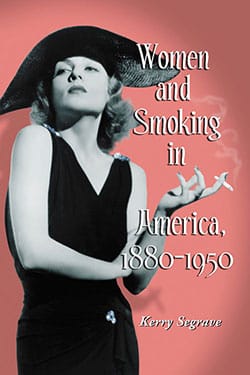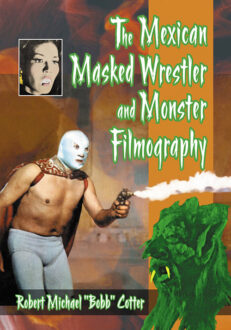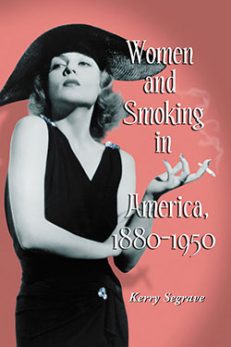Subtotal: $19.99
Women and Smoking in America, 1880–1950
$39.95
In stock
About the Book
During the last 20 years of the 19th century, cigarette smoking was transformed from a lower-class habit to a favored form of tobacco use for men and practically the only form available to women. The trend continued to grow through the 1950s, when smoking was a significant part of America’s social fabric for both men and women.
This social history traces the evolution of women’s smoking in the United States from 1880 to 1950. From 1880 to 1908, women were not allowed to smoke in public places, with strong opposition based on moral concerns. Most smoking was done by upper class women in the home, at private parties, or at socials. By 1908, women smokers went public in greater numbers and challenged the prejudices against smoking that applied to them alone. By 1919, most restaurants allowed women to smoke, though most other public places did not permit it. More and more women smokers went public in the period between 1919 and 1927, with college students leading the way. By 1928, advertisers began to target female smokers, and over the next two decades women smokers gradually gained equality with male smokers.
About the Author(s)
Bibliographic Details
Kerry Segrave
Format: softcover (6 x 9)
Pages: 251
Bibliographic Info: photos, notes, bibliography, index
Copyright Date: 2005
pISBN: 978-0-7864-2212-8
eISBN: 978-1-4766-2037-4
Imprint: McFarland
Table of Contents
Preface 1
1. The Years to 1880 3
2. The Status of the Cigarette, 1860s–1930s 9
3. Abroad, 1880–1908 13
4. America, 1880–1908 21
5. The Opposition, 1880–1908 36
6. Abroad, 1908–1919 50
7. America, 1908–1919 58
8. The Opposition, 1908–1919 78
9. Abroad, 1919–1927 94
10. America, 1919–1927 98
11. The Opposition, 1919-1927 131
12. Abroad, 1927–1950 151
13. America, 1927–1950 156
14. The Opposition, 1927–1950 202
15. Conclusion 212
Notes 217
Bibliography 229
Index 239

 The Ages of the Justice League
The Ages of the Justice League 




